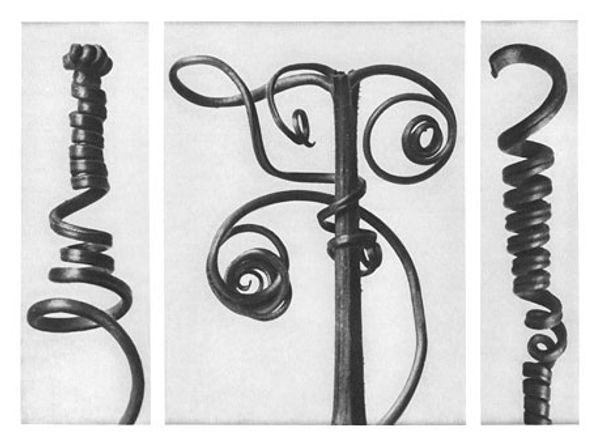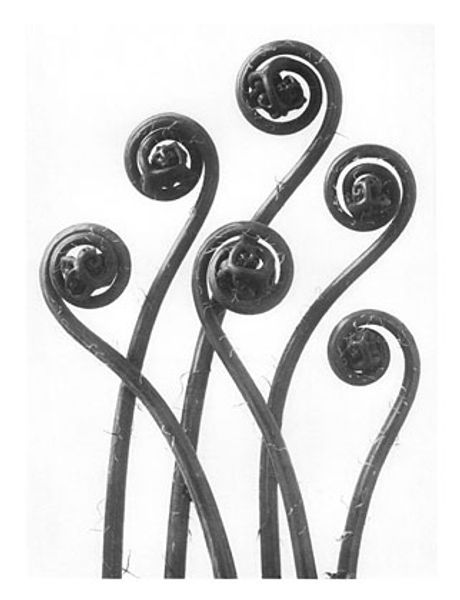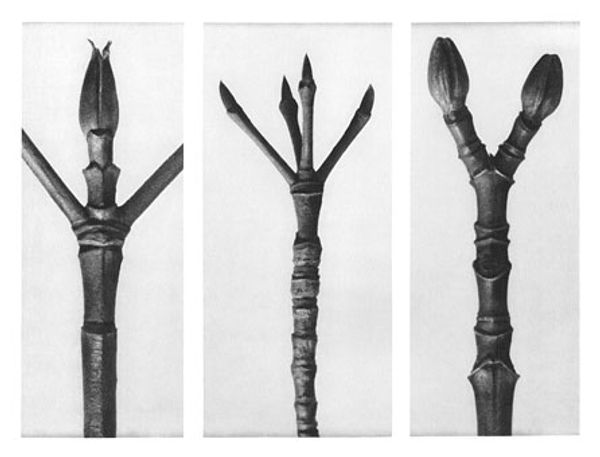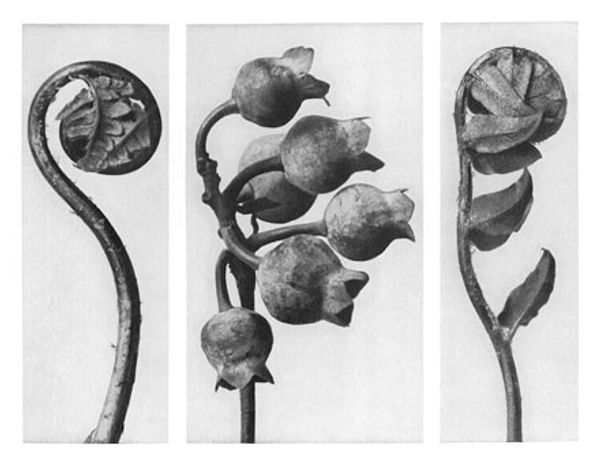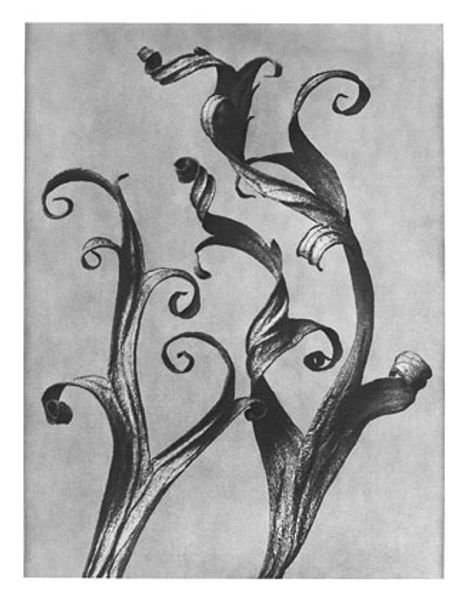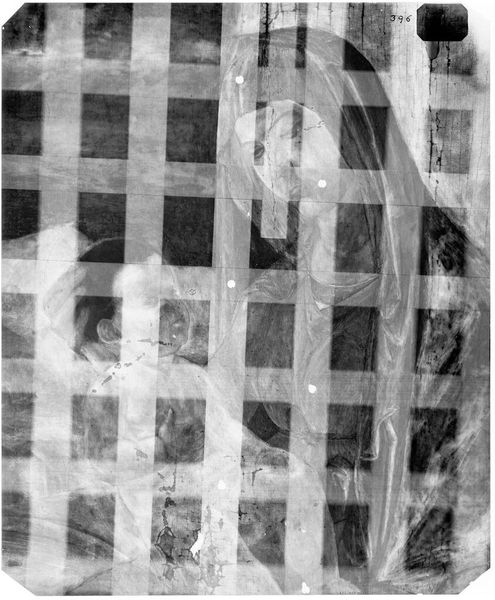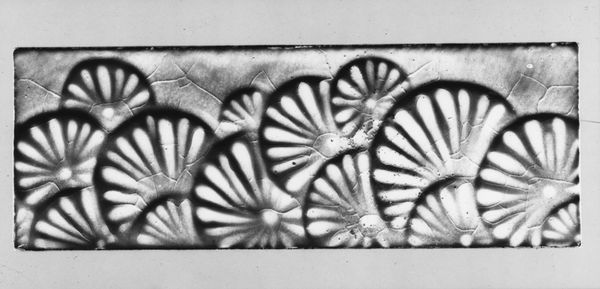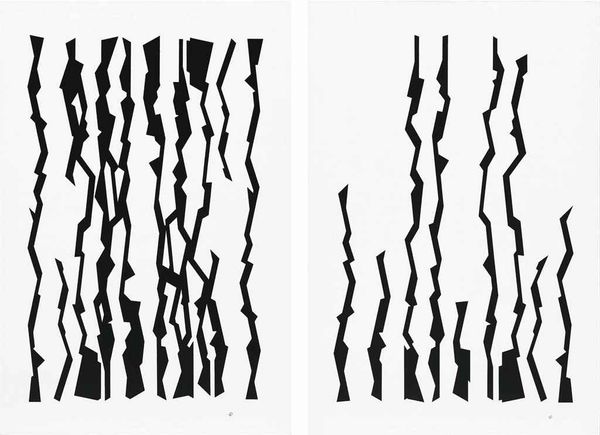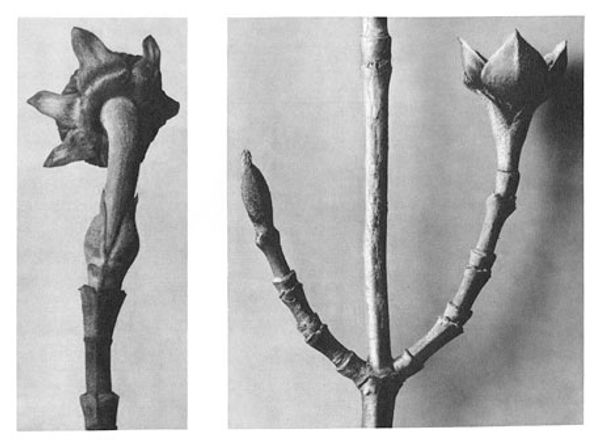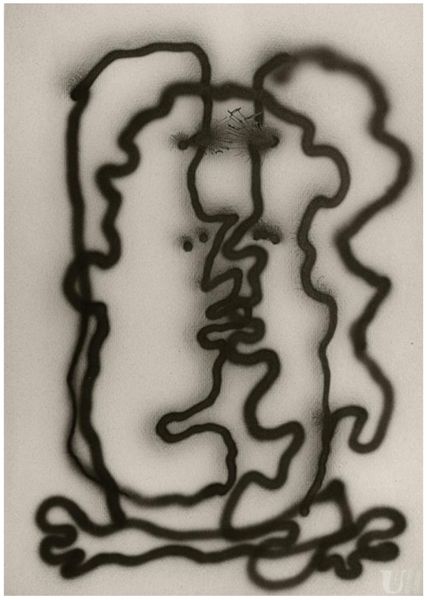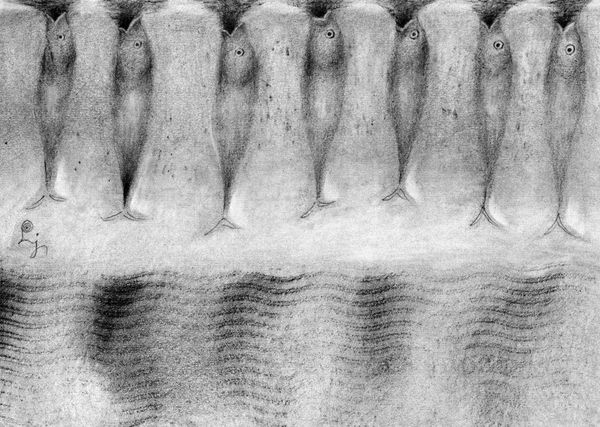
Copyright: Public domain
Curator: This image presents us with Karl Blossfeldt's "Art Forms in Nature 54", a photograph taken in 1928. Its stark black and white tones and clear focus immediately capture attention. Editor: Yes, I'm immediately struck by its austere beauty. It feels very... intentional. Almost like an engineer's drawing, but rendered in living organic form. Curator: That is precisely the kind of tension Blossfeldt explored. He was interested in the underlying structures and geometries that exist within nature itself. Here, the close-up focus reveals spiral forms and sharp linear details, almost abstracting them from their natural context. The meticulous composition further emphasizes these formal aspects. Editor: And it certainly challenges the prevailing pictorial aesthetic of his time. Consider the rise of mass media. This feels like a deliberate turn away from idealization toward objective documentation. The photograph, in this way, becomes a form of scientific observation accessible to the public eye. Blossfeldt isn’t just showcasing nature, he is teaching us to *see* it. Curator: Absolutely. And note the way Blossfeldt uses light and shadow to define the contours of these curling forms, almost giving them a sculptural presence within the frame. The composition is also a testament to symmetry, specifically in the use of multiple plant subjects. The arrangement feels both deliberate and natural, highlighting inherent structures that define their being. Editor: Beyond that, the work fits into a period of German art that valued simplification and the rejection of excess ornament. These images provided a sort of visual catalog meant for educational and, potentially, political use, showing German citizens a vision of perfectible form— applicable to any number of areas of design or craft. Curator: Intriguing interpretation. Ultimately, the photograph transcends mere documentation and reveals a harmonious marriage of art, nature, and structure. Editor: Indeed. It demonstrates the profound interconnectedness between the organic world and the forms we impose upon it.
Comments
No comments
Be the first to comment and join the conversation on the ultimate creative platform.
